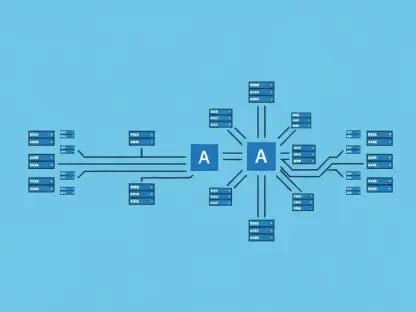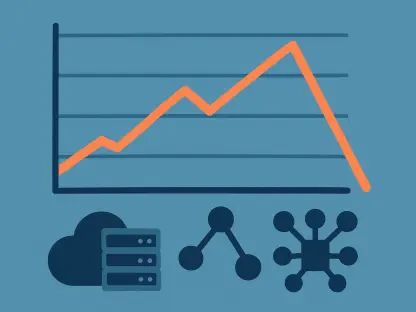In the fast-evolving world of AI, Vijay Raina stands as a beacon of expertise in enterprise SaaS technology and software design. As industries increasingly rely on AI, the success of projects often rests not just on models but on the underlying data — the realm where data engineers hold sway. Vijay discusses how adopting a product management mindset can redefine the role of data engineers, ensuring AI projects not only reach production but thrive there. This interview explores the blend of technical and strategic thinking crucial in today’s AI landscape.
What are some common reasons why AI projects fail to make it to production?
AI projects often stumble not because of the models but due to upstream issues like messy data and mismatched expectations. Incomplete data sets, fragile pipelines, and teams working in silos lead to these failures. Essentially, they’re not mere technical glitches but product management issues in disguise. If data engineers adopt a product-thinking approach, they can address these problems more effectively from the onset.
Can you share a personal experience that highlights the upstream issues in AI projects?
Certainly. In one instance at a large tech company, a machine learning model declined in performance post-deployment because of changes in aggregate features created by another team. While the code itself was fine, the logic behind the data shifted unnoticed, showing how critical upstream alignment and cross-team visibility are. These aren’t skills gaps, but thinking gaps where data isn’t just infrastructure but the actual product.
How can data engineers adopt a “product mindset” in AI pipelines?
Adopting a product mindset means data engineers don’t just focus on shipping code; they build something useful that delivers measurable outcomes. It requires thinking about who will consume the data — be it an ML model or a dashboard. Understanding the consumer’s needs and expectations for latency, reliability, and clarity helps engineers create more robust, user-friendly pipelines.
Why is it important for data engineers to understand their data consumers when thinking like product managers?
Understanding data consumers is crucial because each user, whether it’s a model or a dashboard, has unique needs. If data engineers know these needs up front, like what defines success or the critical metrics, they can tailor their pipelines to meet these expectations. This consumer-focused approach ensures the data is not just available but truly usable and reliable for the intended application.
What steps can data engineers take to define success for their AI projects, beyond just ensuring the pipeline runs?
Defining success goes beyond just running the pipeline. Engineers should measure if the pipeline produces the expected data outputs, maintains schema integrity, and keeps metrics within required thresholds. Adding checks, such as freshness monitoring, can increase trust and ensure that data is both current and accurate, aligning with the key performance indicators of the project.
How can data engineers build pipelines that are adaptable and evolve over time?
Pipelines should be modular with clear ownership boundaries to enable evolution. Versioning datasets and treating aggregates like APIs, where changes are documented and backward-compatible, can help. This approach allows for controlled adaptations without disrupting downstream processes, promoting an agile pipeline capable of evolving with new insights or requirements.
What does the article suggest about treating aggregates like APIs, and why is it beneficial for ML teams?
Treating aggregates like APIs involves versioning, documenting, and ensuring backward compatibility, which fosters trust in the data’s reliability. For machine learning teams, this means they can adopt these aggregates without fear of breaking production models, allowing them to iterate and optimize models with more confidence and less friction.
How can aligning on the “Why” behind data help prevent painful rework later in AI projects?
Revisiting the “Why” helps in grounding the data purpose and aligns it with the broader project goals. Understanding what decisions the data drives prevents unnecessary rework by ensuring all facets of the project are designed with clear, strategic intent. This alignment reduces the risk of developing data products that don’t serve their intended objectives effectively.
What habits should data engineers change to start thinking more like product managers?
Data engineers should start by writing concise data specs before coding, defining the users, inputs, and outputs, and identifying success criteria. Conducting stakeholder reviews before launches can also pivot thinking from mere code execution to product delivery, aligning with the end users’ needs and minimizing deployment hurdles and trust issues.
Can you outline the components of a good data spec before coding begins?
A good data spec should highlight who uses the data, the expected inputs and outputs, and the criteria for success. It should also define any alerts to trigger upon failure. This streamlined approach ensures that everyone involved has a clear understanding of the project’s aim and reduces the likelihood of costly iterations later.
How can stakeholder reviews help in launching AI data projects successfully?
Stakeholder reviews allow data engineers to gather feedback from users, PMs, and other stakeholders before launch. By presenting sample outputs and discussing them, potential issues can be identified and addressed early on. This practice saves time and builds trust, assuring that the data meets user needs and expectations.
Why is it crucial to track data changes and maintain a changelog in AI projects?
Tracking data changes and maintaining a changelog are crucial because they provide visibility into schema evolutions and data shifts. This transparency allows teams to prepare for any downstream effects these changes may have, ensuring continuity and robustness in AI models which depend on stable data foundations.
What are the suggested steps for setting SLAs for AI projects, and why are they important?
Setting SLAs involves defining expectations for data freshness, necessary checks, and failure alerts. They are essential because they establish a clear understanding of what is required for data reliability and timeliness, which are critical for maintaining the integrity and trustworthiness of AI models that rely on frequent data updates.
In the context of AI, how does thinking like a product manager transform data pipelines into products?
Thinking like a product manager transforms data pipelines by focusing on creating outcomes that align with user needs and business goals. It emphasizes ownership throughout the data lifecycle, from creation through consumption, ensuring that every aspect of the pipeline is built to provide value and support decision-making, thus turning pipelines into actionable, reliable products.
How can data engineers become the bridge between business intent and AI impact?
Data engineers become bridges by interpreting business objectives into data products that AI models can effectively utilize. By understanding both the business intentions and the technical requirements, they ensure that the data serves its purpose, supporting AI decisions that drive business success. This dual understanding is key to maximizing AI’s potential impact.
What are some practical applications of thinking like a product manager in designing new pipelines?
Thinking like a product manager in designing pipelines can lead to more user-centric solutions. Practical applications include versioning and documenting data sets for reliability, holding regular stakeholder engagements for continuous feedback, and setting specific KPIs for pipeline outputs. These practices improve collaboration, usability, and ultimately, the success of AI initiatives.









